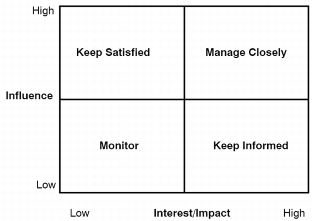
This accounting method tracks individual items of inventory, which is useful if you can identify each item with, for example, a serial number or RFID tag. This can produce a higher degree of accuracy, but many manufacturers are unlikely to have items that have a unique identification. This is better for high-value items that need differentiation, rather than interchangeable items. This is a common accounting method that uses a weighted average of all products to determine and track inventory. Average costing is useful in situations where it is difficult to assign costs to specific or individual products.
Which of these is most important for your financial advisor to have?
Each customer might receive unique versions of products using different raw materials or options, so costs are determined for each job order. Inventory covers the raw materials, partially completed goods, or other goods that have been manufactured but have not yet been sold. Manufacturing accounting must capture these costs, including the cost of raw materials and the cost of production. It becomes even more challenging if products are partially assembled and then inventoried or scrapped in production and sent through a rework process.
Manufacturing accounting tips.
It will avoid a situation where you have too much inventory (which costs money) or, even worse, not enough inventory, where you cannot fulfill the requirements of your customers. Many of these software providers are tailor-made for the complex requirements of modern SME manufacturers, combining affordability with cutting-edge functionality. For example, with MRPeasy, accuracy in cost accounting is assured thanks to enhanced inventory and production tracking tools, and procurement management functionalities. A standard accounting module helps keep tabs on the books while seamless integrations with respected financials software like QuickBooks and Xero make sure all finances are always under control. The importance of a well-implemented inventory management system cannot be overstated in addressing the above-mentioned issues and ensuring financial health and legal compliance for your company.
Cost Accounting Methods
Additionally, lean accounting emphasizes the use of visual management tools, such as value stream maps and performance dashboards, to enhance transparency and facilitate decision-making. By adopting lean accounting principles, manufacturers can create a more agile and responsive financial management system that supports continuous improvement and sustainable growth. Producing credible financial track records helps businesses reinforce investor faith and build a reputation for honesty. Auditing allows a manufacturing business to ensure that the accounting processes and standards deployed in analyzing a company’s finances are up to the mark. This helps entrepreneurs rest assured that their firm’s statements and records, and in turn the company’s adherence to business ethics and integrity. Accurate financial records are important for both capital expansion goals and to avoid legal repercussions arising from monetary misappropriation.
- A lot of manufacturing accounting revolves around creating records that managers can use to inform business decisions.
- This accounting method tracks individual items of inventory, which is useful if you can identify each item with, for example, a serial number or radio-frequency identity (RFID) tag.
- Manufacturing costs can also be categorised as either variable costs or fixed costs.
- Direct materials refer to the raw materials that manufacturers transform into finished products.
- Return on assets (ROA) is another critical metric that assesses how effectively a company utilizes its assets to generate profits.
Introduction to Manufacturing Costs

The closing entries that follow are based on the accounts included in the cost of goods manufactured schedule and income statement for Red Car, Inc. A Manufacturing account is an internal financial statement that businesses use to track their production costs, materials used, and inventory levels. general ledger vs trial balance Accurate manufacturing accounting ensures businesses can confidently sail through financial uncertainties, thanks to comprehensive accounting data. It provides a detailed insight into the indirect costs and total cost of manufacturing, helping companies to evaluate their profitability.
By doing this, you can work out the labour and material costs to produce a single unit of your product. Assume that finished goods are transferred from the factory to the warehouse at production cost plus a 10% manufacturing profit. You can automate your inventory management by implementing inventory management software, barcode scanners, and warehouse robotics. These tools serve to boost the efficiency with which your inventory is managed and the accuracy of your stock-on-hand records.
Overall, accounting for manufacturing costs requires a specialized understanding of the unique aspects and complexities of the manufacturing industry. By employing appropriate accounting practices, businesses can accurately track costs, common size income statement definition make informed decisions, and effectively manage their financial performance. These would include expenses such as storage facility or warehouse mortgage fees, bank loans, machinery and equipment depreciation, and some labor costs.
FIFO accounting for manufacturing inventory considers the first units received into inventory are the first ones sold. Think of a storage area that is filled from the rear with the most recently manufactured units, but shipments are taken from the front. The cost of the most recently sold unit is based on the oldest set of raw materials purchased. Manufacturing accounting refers to the specialized branch of cost accounting that focuses on the financial management and control of manufacturing operations within a business. It involves the application of accounting principles and practices to accurately track, analyze, and report the financial aspects of the manufacturing process. As a manufacturing business, you understand the crucial link between a seamless production line and achieving lasting success.
It is therefore mostly an internal business management process aimed at better decision-making on budgeting, cost control, constraint and margin analysis, etc. This involves identifying potential concerns in the production process and finding appropriate solutions for them. Addressing the concerns will help you streamline production costs for better efficiency and allow you to run a lean manufacturing model that turns higher profits. If cash flow is a potential concern, addressing this constraint might involve securing manufacturing business funding beforehand to ensure it does not impede the overall production process in the facility. From inventory and labor expenses to taxes and bookkeeping costs, accounting for manufacturing companies entails several aspects that need to be considered.
Because that directly affects your tax liability, the IRS requires that you use specific methods to calculate both numbers. Bookkeeping is one of the most time-consuming aspects of manufacturing accounting. Maintaining accurate and organized records of all the transactions and costs involved in production can be incredibly laborious if you do it manually. Oracle ERP Cloud is a popular accounting software solution amongst manufacturers, particularly in process industries. ERP Cloud offers integrated functionality across large enterprises including supply chain, production, HCM, financials and more. In accounting, the Cost of Goods Sold is an expense appearing in the income statement.
It only updates the ending inventory balance in the general ledger when a physical inventory count is conducted. Since physical inventory counts are time-consuming, few companies do them more than once a quarter or year. In the meantime, the inventory account in the accounting system continues to show the cost of the inventory that was recorded as of the last physical inventory facts on the specific identification method of inventory valuation count. This means that the inventory valuation in the accounting records will be inaccurate, except when a physical count is performed. Many manufacturers use the ‘first-in, first-out (FIFO)’ method, where products are sold in the order they are added to inventory. A popular way of costing inventory; this could work for businesses that have products with a shelf life.
